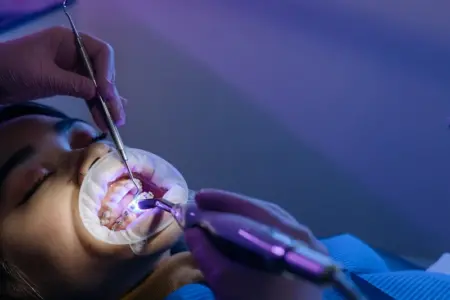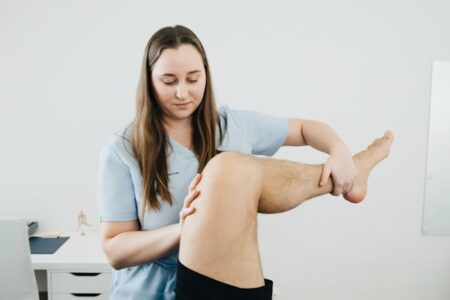Think about the last medication you took. How many conditions do you think it treats? You may be surprised to learn that many drugs have the capability to treat more than one health problem. Learn more about eight popular dual-purpose medications below.
1. Birth Control
Hormonal birth control is often used by women to prevent pregnancy. Once a month menstruating women will release an egg from their ovaries. This is called ovulation. The birth control pill safely stops the ovulation process, keeping the woman from getting pregnant.
Although pregnancy prevention may be the pill’s primary use, many women also use it to improve acne breakouts. A woman’s adrenal glands and ovaries typically produce low levels of hormones known as androgens. But if a woman has higher androgen levels, her skin will produce excess sebum, causing acne. Combination birth control pills containing both progesterone and estrogen lower androgen levels. This reduces sebum production, improving breakouts.
2. Botox
Botox injections are typically known for their ability to reduce the appearance of facial wrinkles. Using a toxin called onabotulinumtoxinA, these injections temporarily prevent muscles in your face from moving. This relaxes areas that commonly wrinkle, like your forehead or the delicate skin around your eyes.
While Botox’s aesthetic benefits are nice, many people aren’t using the treatment to prevent aging. These injections have also been approved to treat chronic migraines. Doctors inject botox around the pain fibers associated with headaches. The treatment enters nerve endings around the injection site, preventing feelings of pain. However, doctors warn that it may take several treatments before patients notice a reduction in headaches.
3. Aspirin
Aspirin is an over-the-counter medication that helps relieve discomfort from minor aches and fevers. This medication eases pain by stopping the production of prostaglandins, which are cells that regulate inflammation and pain. Along with pain management, this medication can also support heart health.
Studies show Aspirin reduces patient risks for major cardiovascular events, like a heart attack. Certain chemicals in your blood can cause clotting. This can lead to clogged arteries, which put you at risk for heart issues. Aspirin targets these chemicals, slowing the formation of clots and reducing your risk for a heart attack or stroke.
4. Minoxidil
Minoxidil is an antihypertensive used to treat high blood pressure. High blood pressure overexerts your heart and arteries. Over time this can cause kidney failure, heart failure, and brain damage. Minoxidil relaxes blood vessels, allowing blood to move more easily, and lowering your blood pressure.
Minoxidil foam solutions can also be used to treat baldness in men and thinning hair in women. Since this drug dilates your blood vessel, applying it to your scalp allows blood to flow smoothly to the area. This increase in blood circulation encourages hair to grow.
5. Bupropion
Bupropion is an antidepressant commonly used to treat Seasonal Affective Disorder and Major Depressive Disorder. Some people who experience depression suffer from chemical imbalances in the brain. Bupropion restores these imbalances, increasing one’s sense of well-being and improving their mood.
Bupropion is also the first non-nicotine-based medication approved for smoking cessation. This drug helps reduce cravings for tobacco, making it easier to quit smoking. While it’s not clear how this drug has these effects, doctors believe it’s because Bupropion alters the levels of the brain’s neurotransmitters.
6. Atenolol
Atenolol is a beta-blocker used to treat high blood pressure and angina. Angina is a relatively common type of chest pain caused by restricted blood flow to the heart. Atenolol reduces the speed and force of your heartbeat. This improves blood pressure and decreases chest pain.
This drug is also popular amongst performers because it lessens the symptoms associated with stage fright. When someone is nervous adrenaline gets released into their bloodstream, causing their heart rate to quicken. Atenolol helps slow the heart rate back down, making users feel more relaxed before performing or speaking in public.
7. Sildenafil
Sildenafil is used in Viagra, a medication designed to treat erectile dysfunction. This condition is experienced by some men who struggle to maintain an erection. Sildenafil helps to relax blood vessels, improving blood flow to the penis and making it easier to get an erection.
This ingredient can also be found in Revatio, a medication used to treat pulmonary arterial hypertension. This condition narrows the blood vessels in the lungs and right side of your heart, weakening your heart muscle. Sildenafil widens these blood vessels, lowering your blood pressure and reducing strain on your heart.
8. Raloxifene
Raloxifene is used to help prevent osteoporosis in postmenopausal women. When a woman enters menopause, her estrogen lowers. This causes her bones to thin, increasing the risks of breaks and fractures. Raloxifene helps prevent bone loss by mimicking estrogen in her bones.
This drug has also been shown to help decrease the risk of breast cancer in women with above-average risks. Estrogen fuels the growth of breast cancer cells. However, Raloxifene acts like estrogen in some areas of the body, as it blocks it in others, including breast tissue. This can help lower a woman’s risk of breast cancer.
As medicine advances, doctors are finding more ways to help people using existing medications. Talk with your physician if you want to learn more about any of the drugs listed above. You could also check with them to see if any of the medications you take could have additional uses.











